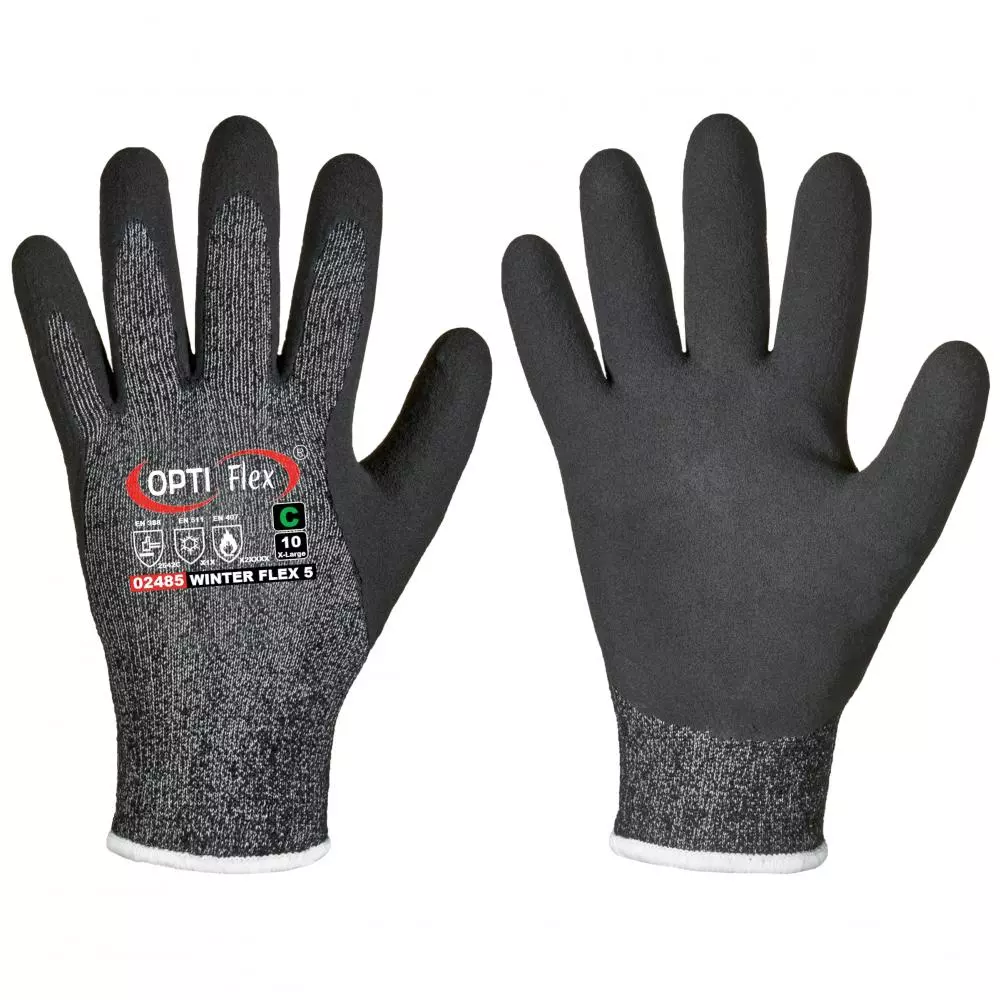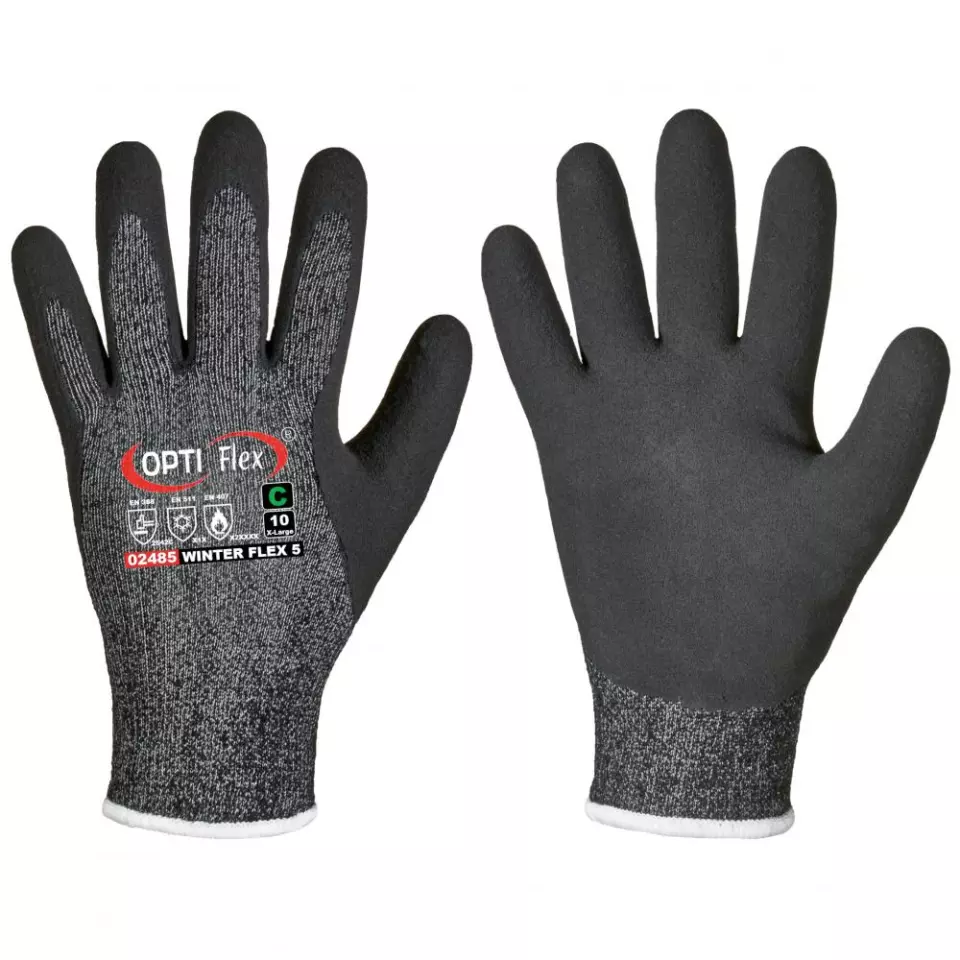
Features You'll Love

Coating Material · Latex
Grip Finish · Sandy
The material applied to glove surfaces to enhance grip, protection, and durability for specific work conditions and hazards.
The surface texture or coating on the palm and fingers that determines how securely the gloves can grip tools, materials, and surfaces during work tasks.

Cuff Style · Knit
Determines how the glove secures around the wrist, affecting fit, protection from debris, and ease of putting gloves on and taking them off.

EN 388 · Puncture Resistance Level 2, Cut Resistance, ISO 13997 Level C, Tear Resistance Level 4
EN 407 · Heat Contact Level 2, Burning Behaviour Level X, Heat Convection Level X, Radiant Heat Level X, Molten Metal Resistance Level X
EN 511 · Cold Contact Level 1
Withstands moderate force from sharp objects like heavy-duty splinters or wires.
Offers medium protection against cut risks from handling lightweight metals and plastics.
Offers the highest level of protection against tearing, withstanding a strong force before ripping.
This product provides protection from contact heat up to 250°C for at least 15 seconds. It is ideal for tasks where you might briefly handle hot items, such as in kitchens or workshops.
Provides light thermal insulation when directly handling cold objects. This offers basic protection for short or intermittent contact with cold surfaces, suitable for general tasks in cool conditions rather than prolonged exposure to extreme cold.
This product has not been tested for its performance when exposed to an open flame. It is not rated for fire resistance and should not be used for protection against direct contact with flames.
This product was not tested for protection against convective heat, which is the transfer of heat through moving air, such as from a flame. Therefore, it has no claimed performance level for this specific thermal risk.
This product was not tested for protection against radiant heat, which is intense heat that can be felt from a distance. It does not claim to offer protection for tasks involving prolonged exposure to radiant heat sources.
This product has not been tested for resistance against splashes of molten metal. It provides no claimed protection and should not be used for welding, foundry work, or other tasks with molten metal risks.
OptiFlex
WINTER FLEX 5 Gloves, 60 pairs
WINTER FLEX 5 Gloves, 60 pairs
4.5 / 5
278,84 €
Price per 5 packages (60 pairs)
4,65 € / pair
Choose size
Free delivery
Features You'll Love

Coating Material · Latex
Grip Finish · Sandy
The material applied to glove surfaces to enhance grip, protection, and durability for specific work conditions and hazards.
The surface texture or coating on the palm and fingers that determines how securely the gloves can grip tools, materials, and surfaces during work tasks.

Cuff Style · Knit
Determines how the glove secures around the wrist, affecting fit, protection from debris, and ease of putting gloves on and taking them off.

EN 388 · Puncture Resistance Level 2, Cut Resistance, ISO 13997 Level C, Tear Resistance Level 4
EN 407 · Heat Contact Level 2, Burning Behaviour Level X, Heat Convection Level X, Radiant Heat Level X, Molten Metal Resistance Level X
EN 511 · Cold Contact Level 1
Withstands moderate force from sharp objects like heavy-duty splinters or wires.
Offers medium protection against cut risks from handling lightweight metals and plastics.
Offers the highest level of protection against tearing, withstanding a strong force before ripping.
This product provides protection from contact heat up to 250°C for at least 15 seconds. It is ideal for tasks where you might briefly handle hot items, such as in kitchens or workshops.
Provides light thermal insulation when directly handling cold objects. This offers basic protection for short or intermittent contact with cold surfaces, suitable for general tasks in cool conditions rather than prolonged exposure to extreme cold.
This product has not been tested for its performance when exposed to an open flame. It is not rated for fire resistance and should not be used for protection against direct contact with flames.
This product was not tested for protection against convective heat, which is the transfer of heat through moving air, such as from a flame. Therefore, it has no claimed performance level for this specific thermal risk.
This product was not tested for protection against radiant heat, which is intense heat that can be felt from a distance. It does not claim to offer protection for tasks involving prolonged exposure to radiant heat sources.
This product has not been tested for resistance against splashes of molten metal. It provides no claimed protection and should not be used for welding, foundry work, or other tasks with molten metal risks.
Product description
Norm: En 388, En 511, En 407 Liner : 60% Polyacrylic, 18% HDPE, 12% Polyamide (Nylon), 10% Elasthane, Black coating: Latex coating, Sandy Finish, Black Sizes: 9, 10, 11 Cut Level 5 According To En 388
• Cut Level C According To ISO 13997